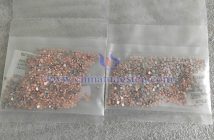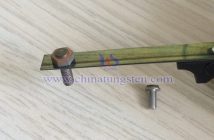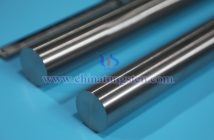Carbon plays a critical role in regulating the microstructure and mechanical properties of tungsten-nickel-iron alloys, with its influence on alloy hardness primarily achieved through altering the microstructure, forming carbides, and modulating interface bonding states.

From a microstructural perspective, tungsten-nickel-iron alloys are primarily composed of tungsten particles and a nickel-iron binding phase, with carbon preferentially reacting with tungsten or other metal elements. At low carbon levels, carbon dissolves interstitially in the nickel-iron binding phase, leading to solid solution strengthening that enhances the hardness of the binding phase. This occurs because interstitial atoms disrupt the original lattice integrity of the binding phase, causing lattice distortion and impeding dislocation movement during deformation, thereby increasing the overall hardness of the alloy.
As carbon content increases, excess carbon reacts with tungsten particles to form tungsten carbide (WC), a compound with high hardness (approximately 17,300 MPa microhardness). These carbide particles are distributed as fine grains at the interface between tungsten particles and the binding phase or dispersed within the binding phase. This dispersion strengthening further enhances the alloy’s hardness by two mechanisms: first, the hard tungsten carbide particles bear external forces, reducing the deformation load on the matrix; second, these carbide particles act as obstacles to dislocation movement, delaying the onset of plastic deformation.

However, the increase in hardness due to carbon is not without limits. Excessive carbon content leads to the precipitation and coarsening of tungsten carbide particles, forming large carbide phases. These coarse carbides disrupt the uniformity of the alloy’s microstructure and create stress concentration points at interfaces. More critically, excessive carbon depletes nickel and iron in the binding phase, reducing its continuity and potentially forming brittle phases. As a result, the trend of hardness increase slows, and in some cases, hardness may even decrease due to a looser structure or increased brittleness, often accompanied by a deterioration in toughness. Additionally, carbon indirectly affects hardness by influencing the wettability between tungsten particles and the binding phase.



